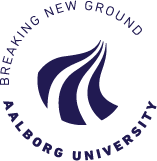Practical information
Content on this page
About the course
This course is a hands-on practical introduction with no prerequisites in applying computer science techniques (like programming and machine learning) in humanities and social science research. It will cover a broad range of techniques and methods representing the latest methodological innovations in social science and humanities applications of machine learning and artificial intelligence.
The course is meant as a hands-on tools workshop focusing on the practical application of these methods and will not go in depth with the mathematical and theoretical foundations. It will rather provide a broad overview of the data science ecosystem and toolbox. We do not expect you to be able to immediately implement the methods in your own research, but the course should provide a good jumping-off point for starting to integrate these methods.
The course will be held entirely online.
Teaching format
Interactive notebooks and live coding
Teaching consists of a mixture of lectures and exercises using interactive online notebooks on Google Collab allowing you to try out and use the various methods as they are being taught. Exercises consist of both live coding and adapting code to solve specific problems or create specific outputs.
Portfolio work
Each day you are given an hour to work on a portfolio with the possibility of sparring with the course lecturers. Here you are expected to solve a limited number of problems using the methods and tools taught during the given day by writing your own code in a notebook.
Two weeks after the end of the course (December 11th 2020), you are expected to hand in your combined portfolio (the notebook(s) containing all your code) in order to receive credits.
The online format
The entire course will be held online via Zoom. Meeting information about the individual sessions can be found on the course schedule. You will also receive meeting invitations for the individual sessions.
While the format for this course already lends itself well to the online format, it does of course has its downsides.
One major downside is the lack of peer discussion and networking during the course. You will spend a lot of time during the course working on exercises for a portfolio, where it is very beneficial to discuss ideas and possible solutions with fellow participants. To facilitate this, we will make use of Zoom breakout sessions so that you are on call with other participants to discuss the exercises. We will also provide a forum, where you can post questions for the instructors and fellow participants.
Another downside is that it can be difficult to follow live-coding, if you are coding on the same monitor as you are following along what the instructor is doing. If you have the possibility, we strongly recommend to have a dual-monitor setup of some kind for this course! A dual-monitor setup (either two monitors or the Zoom call being shown on a TV) enables you to easier see what the instructor is showing while writing along in your own notebook. One monitor will force you to switch back and forth. We will make an effort of explaining verbally what we are doing, so that you can code along by ear, so to speak, but seeing the code is of course easier.
Online forum (Slack)
To provide assistance and foster discussion leading up to and during the course, we have set up a Slack workspace for the PhD course. Use this forum to post questions about Python, the e-course material and the sessions as well as a general forum for discussion.
If you have not received a link to the Slack workspace, please contact Kristian Gade Kjelmann (kgk@adm.aau.dk).
